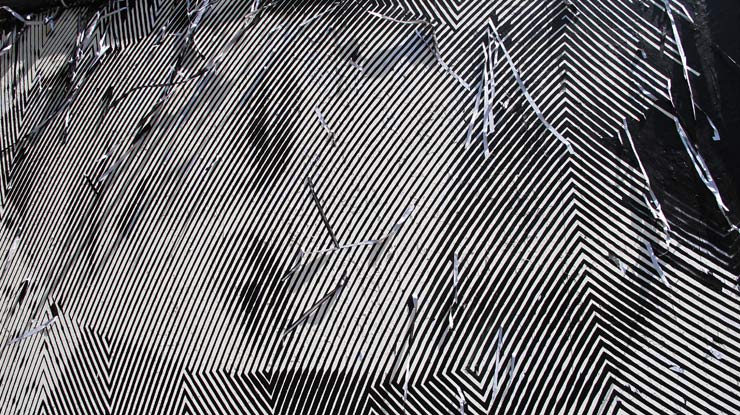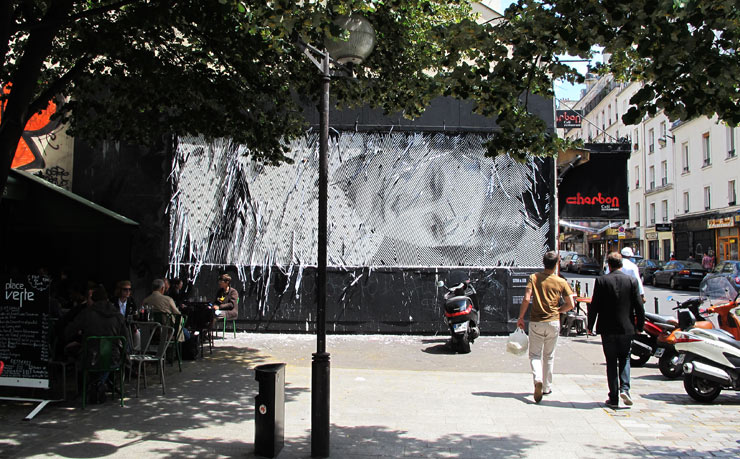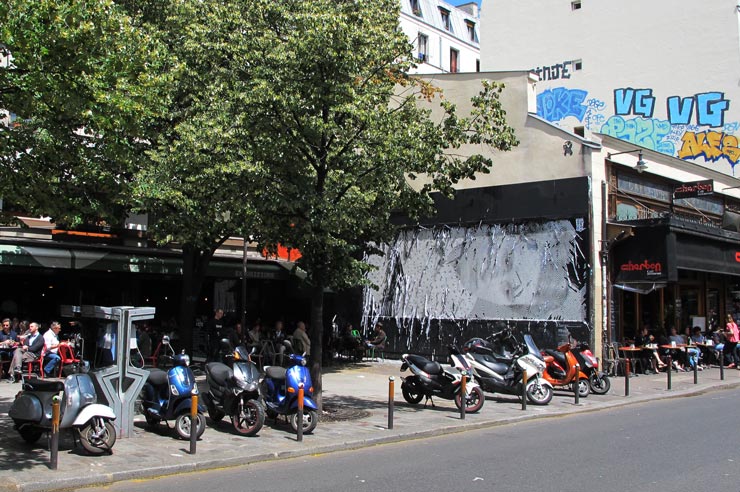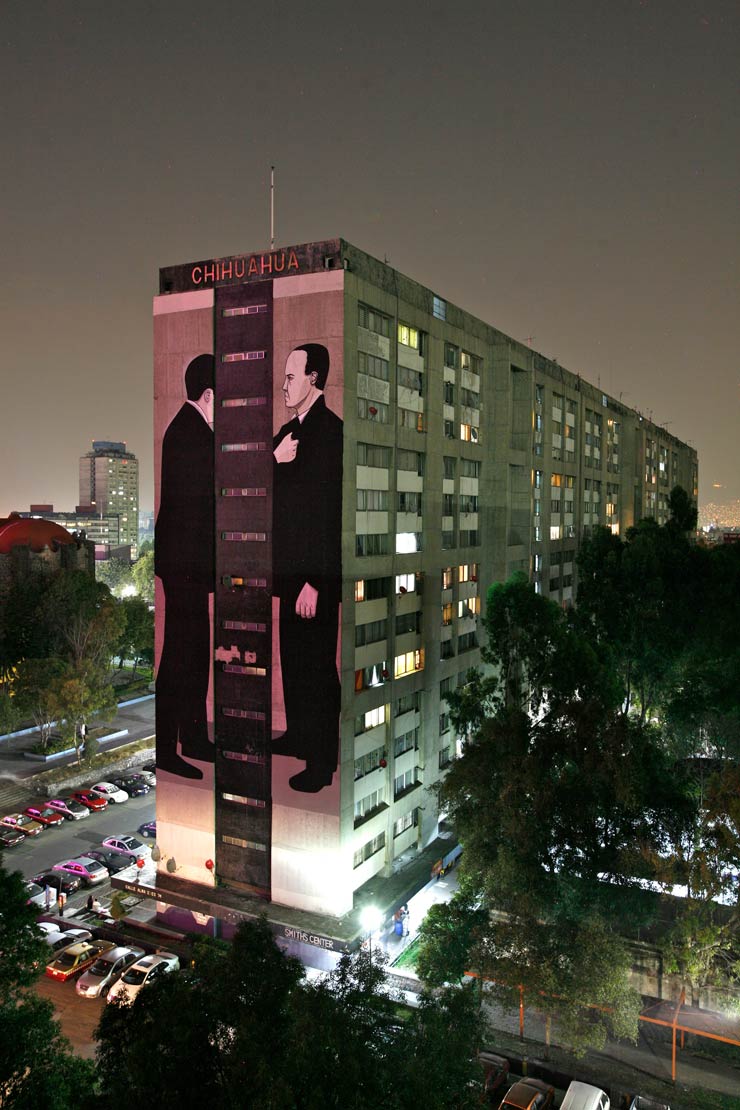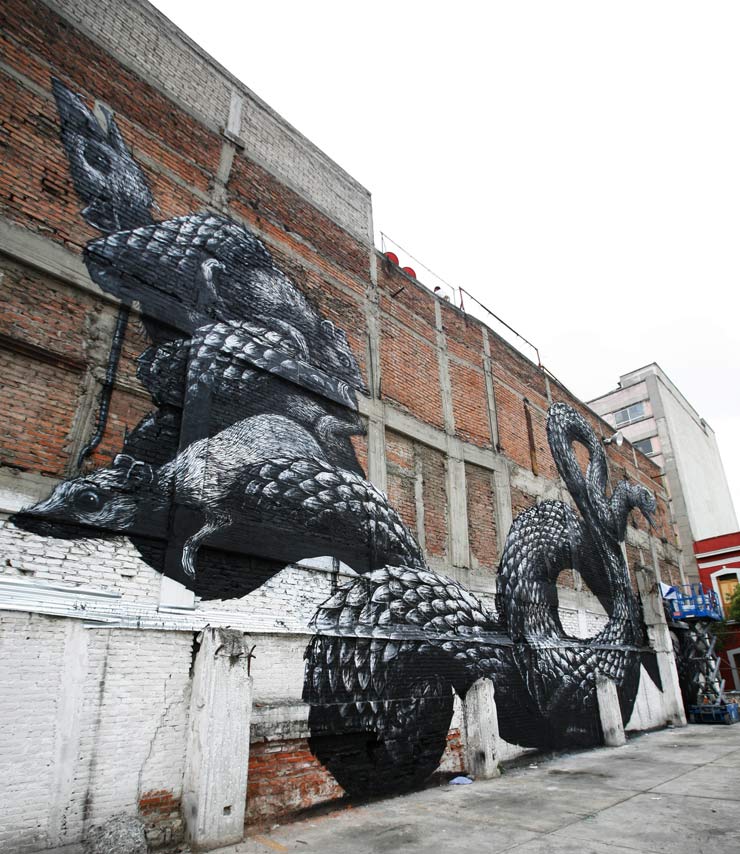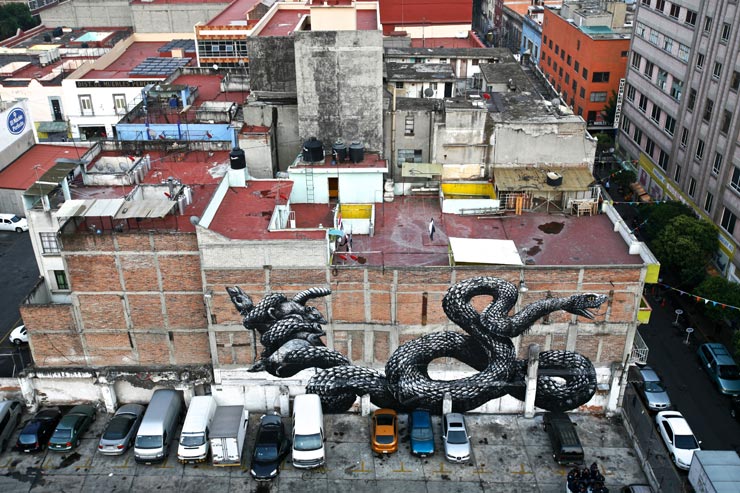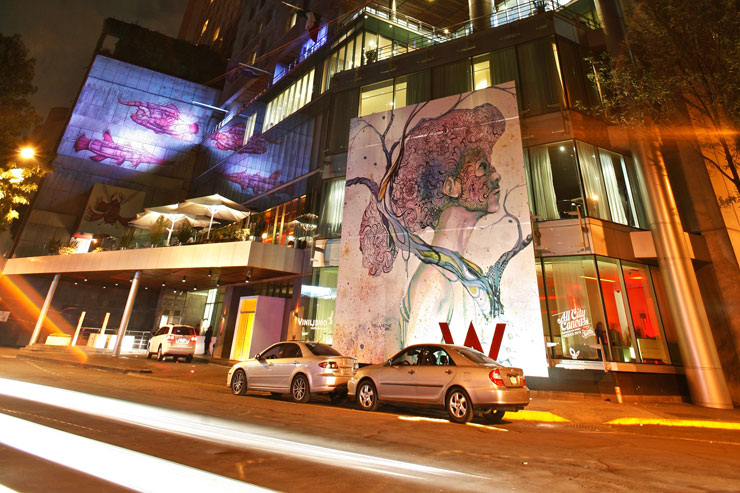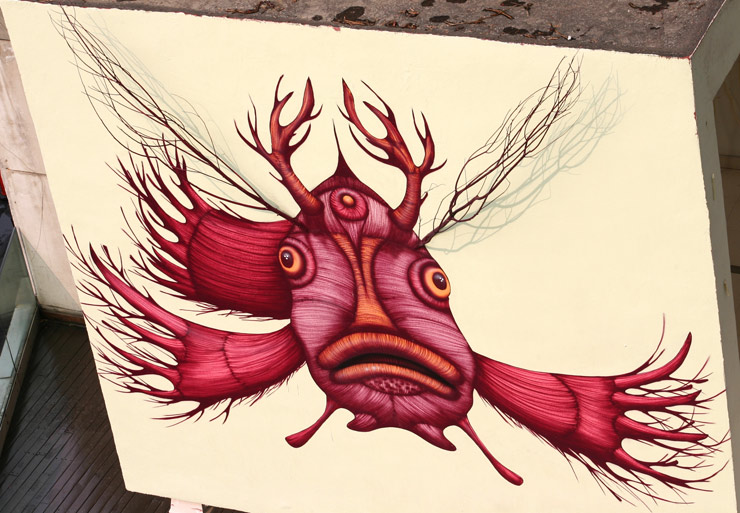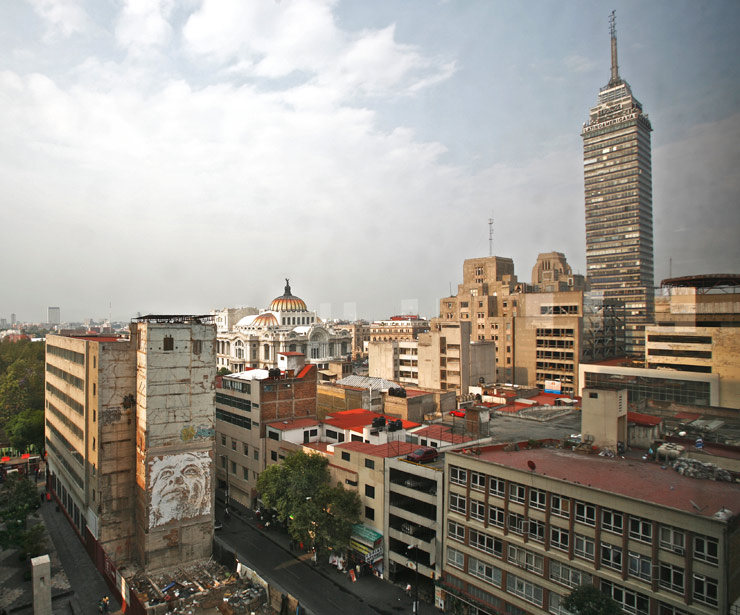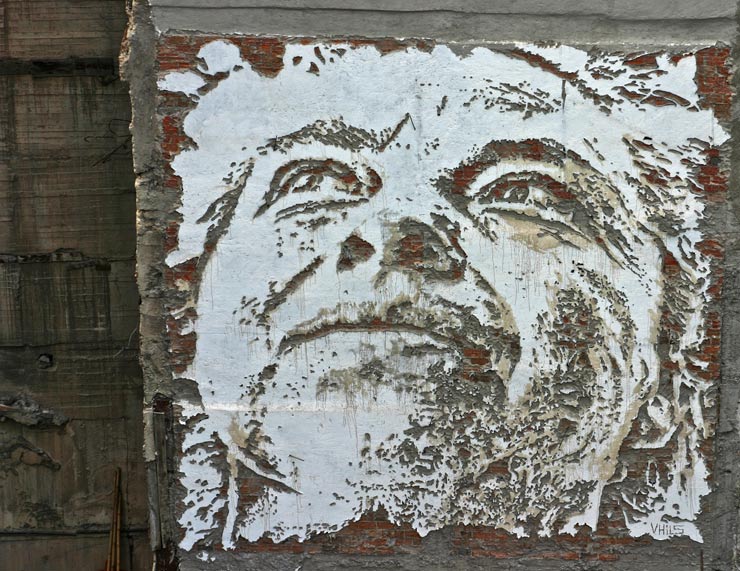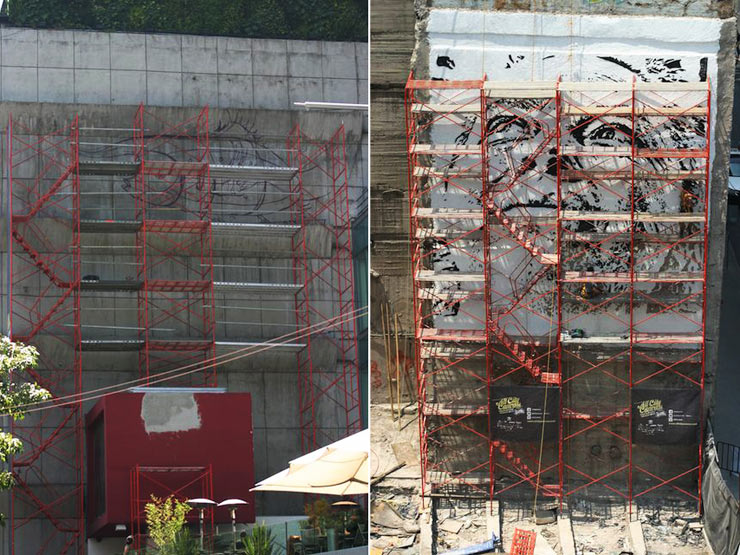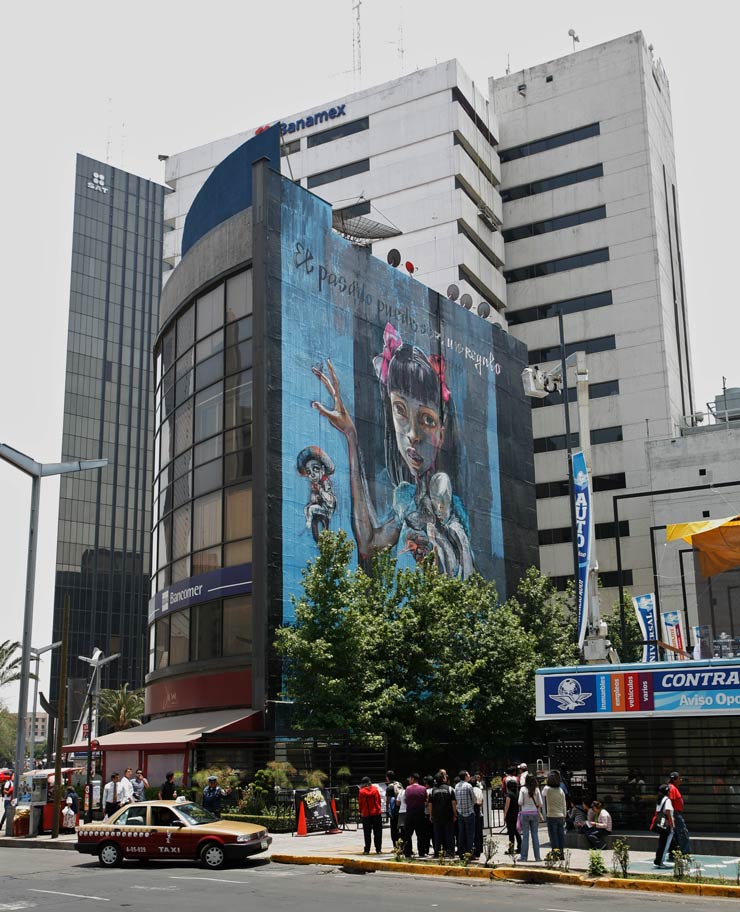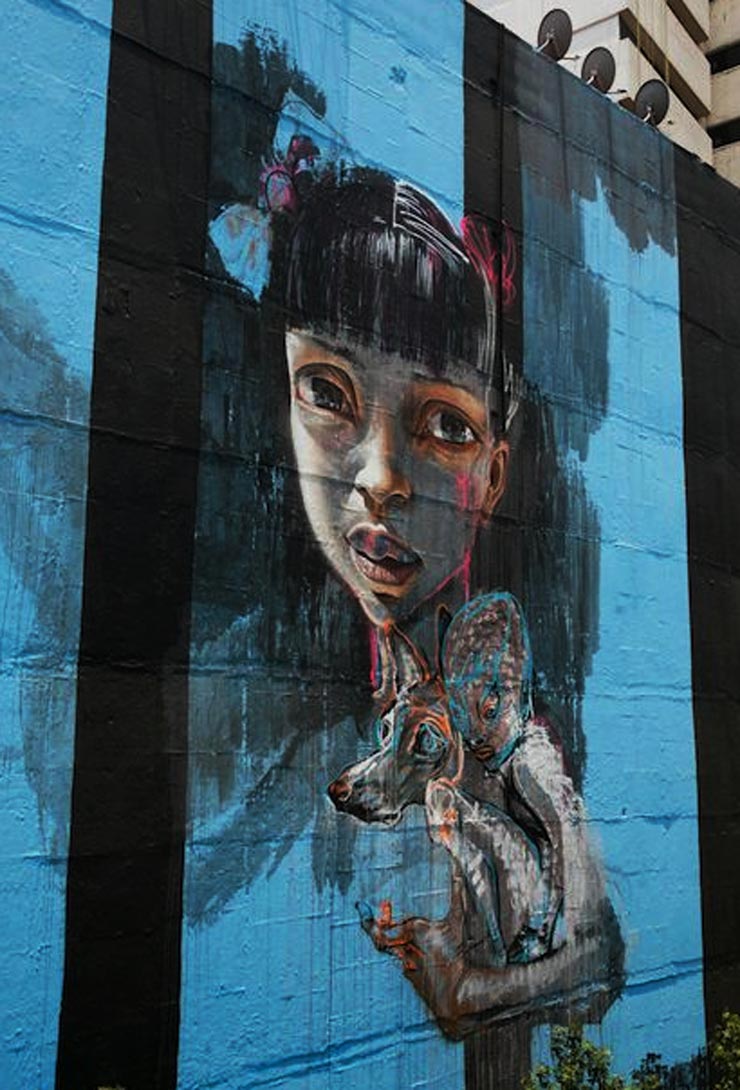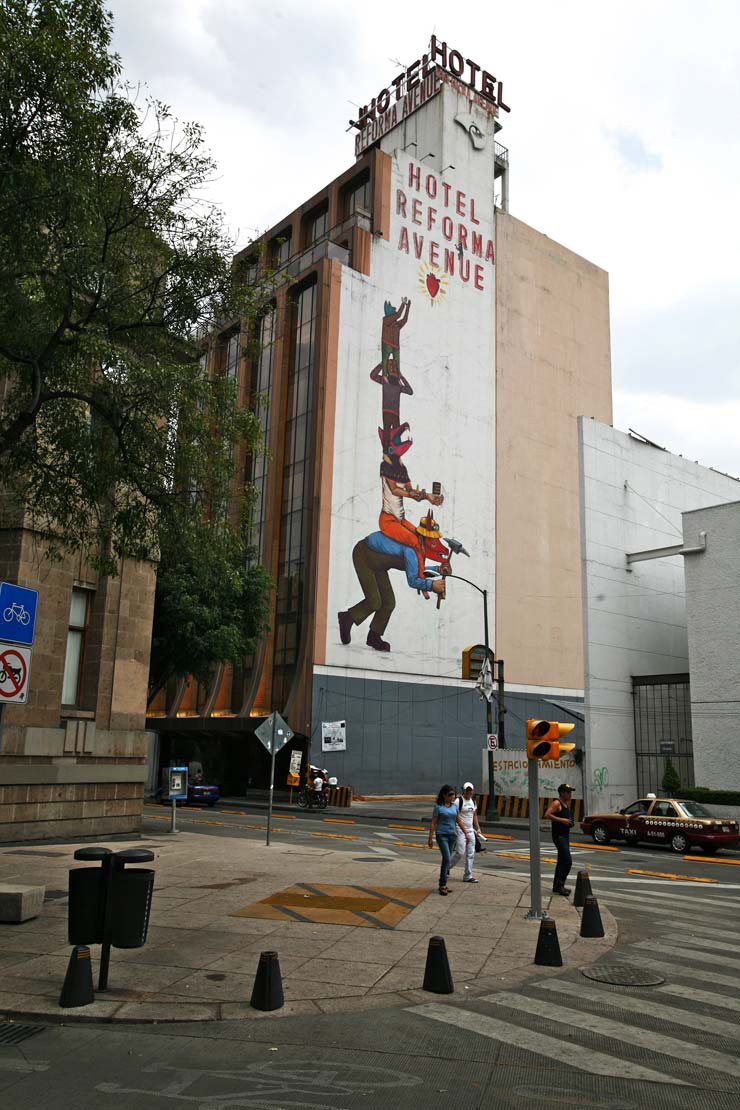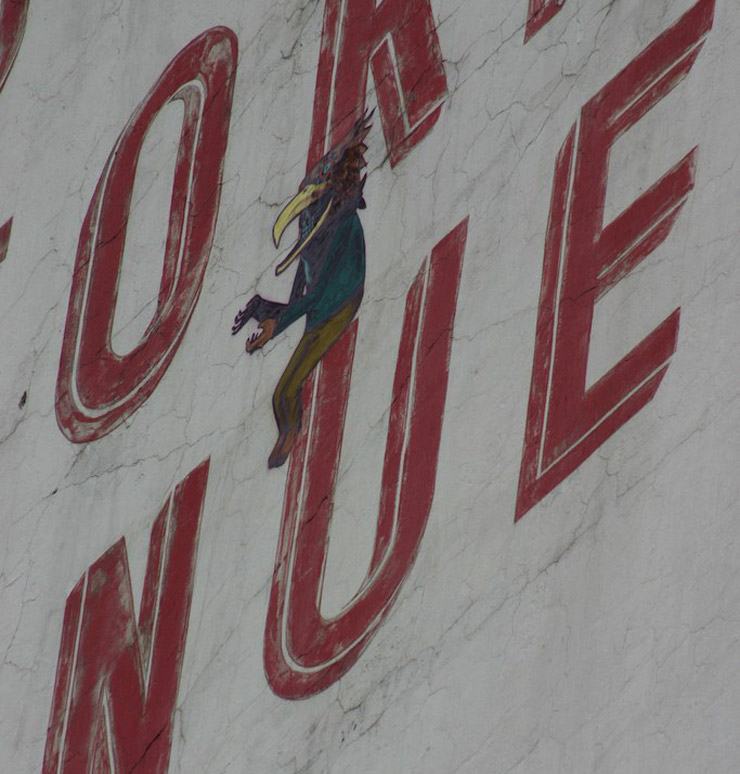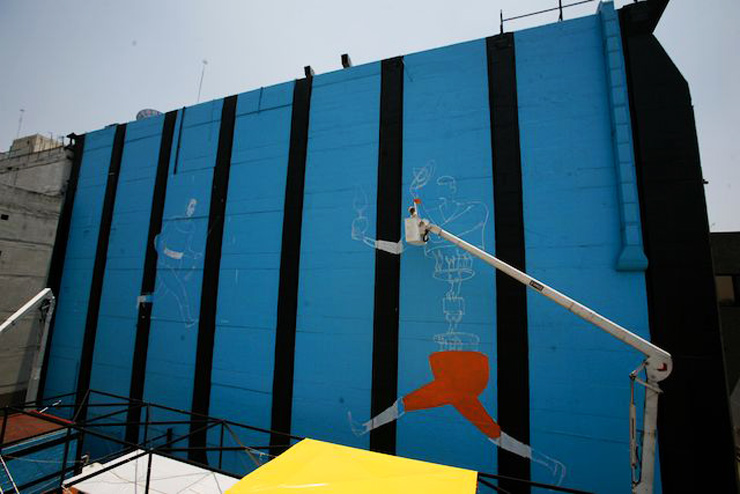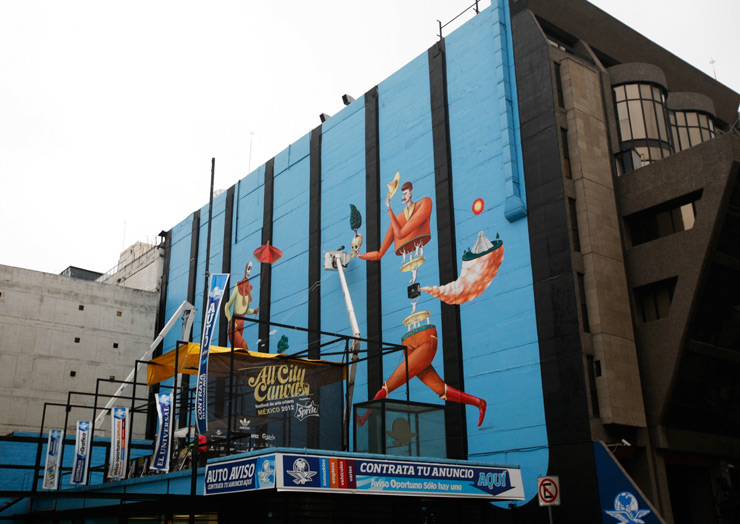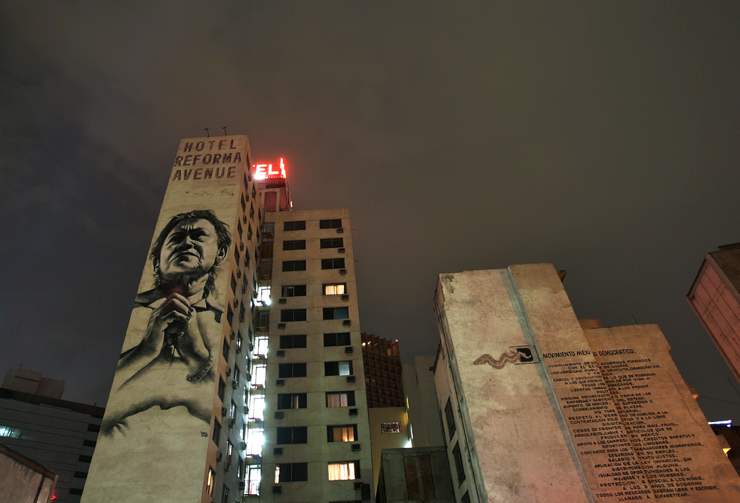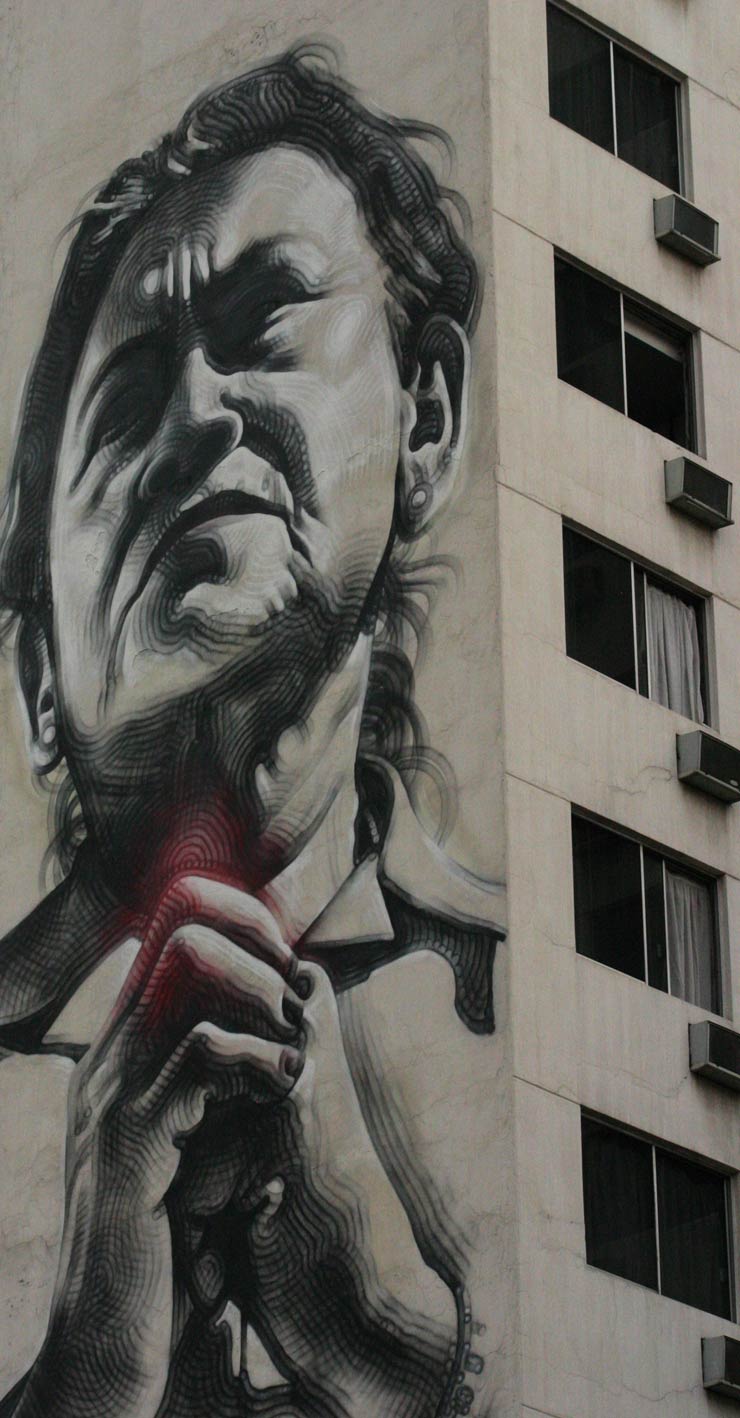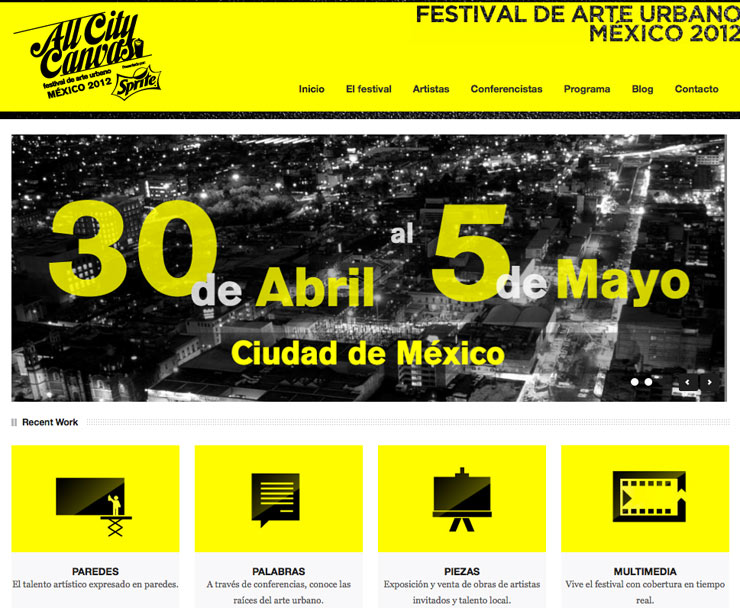Le M.U.R. is a Parisian program of liberating billboards that since 2003 has been formally inviting artists to takeover spaces that would normally be filled with advertisements. So far this year they’ve had artists including Kid Acne and Vhils, with Ever and Astro coming up shortly. This month the Italian Street Art duo Sten & Lex were invited to install one of their distinctive sideways anonymous “stencil posters” in Paris for the Le M.U.R. program. As is true with much of their work, you may not recognize that this is a portrait of a woman unless you stand a back at a distance and change the perspective you are viewing it with.
Today we are pleased to introduce Victor Hugo Celaya, the man behind ARTO (Art Beyond Museums) and a resident of Mexico City, who was on hand to interview Sten & Lex about their piece. With Victor acting as our correspondent, our posting today is an exclusive collaborative feature just for you from ARTO and BSA.
Interview with Sten & Lex
Victor Hugo Celaya: What does creating work for such iconic program as Le M.U.R. mean to you?
Sten & Lex: Le M.U.R. was a very interesting project for us from the beginning because we had heard of it since 2003. In Paris it is almost an institution and also it’s the first time Italians intervene Le M.U.R.
Sten & Lex (photo © Victor Hugo Celaya)
Victor Hugo Celaya: The piece that you selected for Le M.U.R. — the image of a woman — does it have any special meaning?
Sten & Lex: No it doesn’t, it’s just an anonymous portrait of a woman. The portraits we usually do are of strangers. We usually chose the portrait of someone who looks like the people from the country where we do the work. On this occasion, this woman looks French but she isn’t. It’s an anonymous portrait of a serious person, which is in line with all the work we’ve been doing in the last few years.
Victor Hugo Celaya: Do you have a specific message you want to communicate through these anonymous portraits?
Sten & Lex: No, it’s a counter proposal to urban art that has taken on a more social and political nature lately. Hence, we prefer to do something on the side. We’ve never enjoyed doing pieces with specific messages; our work is the portraits. They don’t have any message, people see the portraits and they can have their own ideas about them and people have very different ideas.
Sten & Lex (photo © Victor Hugo Celaya)
Victor Hugo Celaya: You mentioned something important about the way artists use street art to convey social messages. Why do you not use it for that purpose? In general, how do you see urban art today and where is it going?
Sten & Lex: What interests me about urban art now is this contamination with contemporary art; our work has always been involved with art in general. There are no common messages in street art and there are no common techniques… Stencil is very common in street art but the way that we work is very different, it’s a technical study. In street art, we like not only the artists who work thinking about urban art as a stencil with a political message, but also as an installation or something figurative, abstract art. I find a lot of sense in street art at the moment.
Victor Hugo Celaya: Is there someone in the movement you admire?
Sten & Lex: Yes, for example, our work is greatly influenced by the way JR uses posters, the way he covers entire architectural pieces. This aspect of JR’s work has influenced us a lot. There are many things that have influenced us but not necessarily in the realm of street art. Our work is very subjective, the fact that we destroy the stencils and paste the posters is unique — that’s why we call it stencil poster. We paste a paper poster on the wall and then cut it. This was a subjective study we did together.
Sten & Lex (photo © Victor Hugo Celaya)
Victor Hugo Celaya: Okay, lastly, urban art by nature is on the streets. We specifically think of it as giving art back to the people. Is there anything of that sentiment in your work? What do you think of the statement “art to the people”? Do you think it’s something that goes along with your job?
Sten & Lex: It is a reality that street art belongs to the people, but I don’t think it’s easy to understand what people really like. That’s why we don’t really care what people think of our work.
In urban art there are two important aspects: the first one is that anyone can see your work and the second one is that it is closely related to institutional art, that’s the point of view of art critics, since in street art they don’t really exist. However, what does exist is an audience that decides who the best artists of the moment are. Nowadays, this critique is generated over the Internet, in the most important blogs that manage to create great media attention.
BSA>><<<>>ARTO<<<>>><<>>BSA>><<<>>ARTO<<<>>><<>>
To learn more about the ARTO mission and philosophy click here.
To learn more about L’association Le M.U.R. click here
 BROOKLYN STREET ART LOVES YOU MORE EVERY DAY
BROOKLYN STREET ART LOVES YOU MORE EVERY DAY